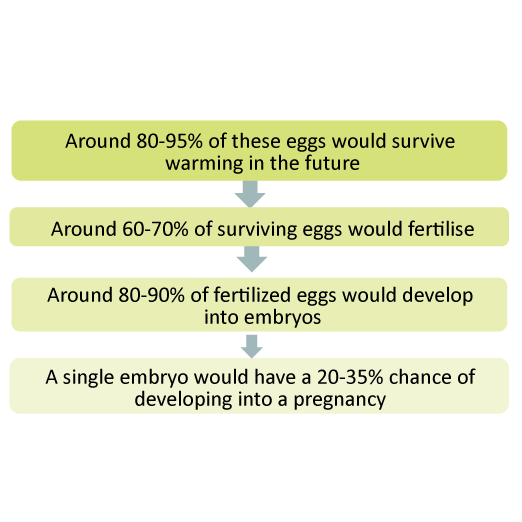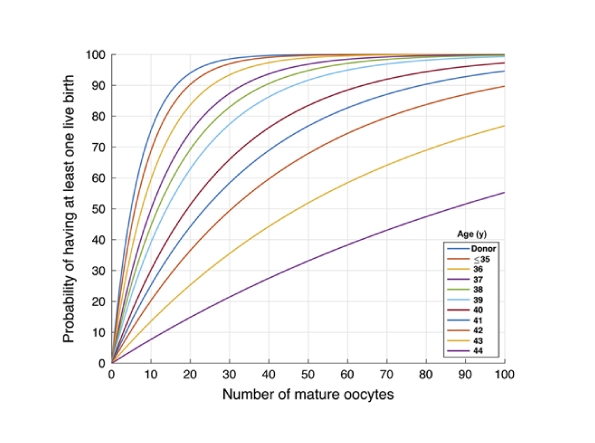
Egg Freezing
Why freeze?
Egg freezing is a way of preserving fertility. This may be done before treatment that could seriously affect fertility, such as oncology treatment. It is also increasingly popular for people who wish to delay starting a family due to personal circumstances. As fertility potential decreases with increasing age, freezing eggs at a younger age helps optimise likelihood of a successful live birth at a future date.
What is the process of egg freezing?
Collecting Eggs
In order to obtain eggs for freezing, you will undergo the same stimulation and egg collection procedures as in IVF. This involves having hormone injections to stimulate your ovaries in order to obtain multiple eggs. Following the retrieval of eggs from the ovaries, the cells surrounding the egg called cumulus cells have to be removed before the eggs are frozen. Occasionally no eggs may be collected.
Freezing
Vitrification is a method of freezing we use to preserve eggs. Vitrification is an ultra-rapid cooling technique that allows the water inside and surrounding the egg to instantaneously cool into a solid state with no ice crystal formation at all. We avoid ice crystal formation as it may damage the structures inside the egg.
What happens if I need to use the frozen eggs?
After thawing, the eggs are inseminated by ICSI (intracytoplasmic sperm injection). ICSI has to be used to achieve fertilisation because the cumulus cells have been removed. Of the resultant embryos, a single embryo is transferred into the uterus and any remaining good quality embryos are frozen.
What are the success rates for egg freezing?
While we have been freezing eggs for many years in New Zealand, the number of women returning to use their frozen eggs in an attempt to get pregnant is not yet at a level where we can provide reliable and meaningful data.
The chance of success is largely determined by the woman’s age at the time of freezing and the number of eggs frozen. International data suggest that frozen eggs have similar potential to fresh eggs.
Therefore, we would expect that for a woman aged 35 or under with a good ovarian reserve, one stimulated cycle would result in the collection of 10 eggs, of which 7 eggs would be suitable for freezing and storage.

Success rates are lower for women over 35. Some women may need multiple IVF cycles to obtain enough eggs for a reasonable chance of a live birth in the future. This may not be an option for oncology patients due to time constraints before starting cancer treatment.
Testing your chance of success
Assessing your ovarian reserve using a blood test called Anti-Mullerian Hormone (AMH) may give an idea of how successful we can expect the procedure to be. The AMH can provide insight into the quantity of eggs remaining, but does not give information about the quality of the eggs.

The figure shows live birth prediction by number of mature eggs retrieved. Each curve shows the percent likelihood that a woman of a given age will achieve at least one live birth.
There is no guarantee that egg freezing will lead to a pregnancy and a healthy live birth later in life. Many women who freeze their eggs may not ultilise them in the future, either because they conceive naturally or they do not have a partner.
You may wish to consider donating the surplus frozen eggs in the future to an infertile couple. Our fertility counsellors would be happy to provide you with more information on this.